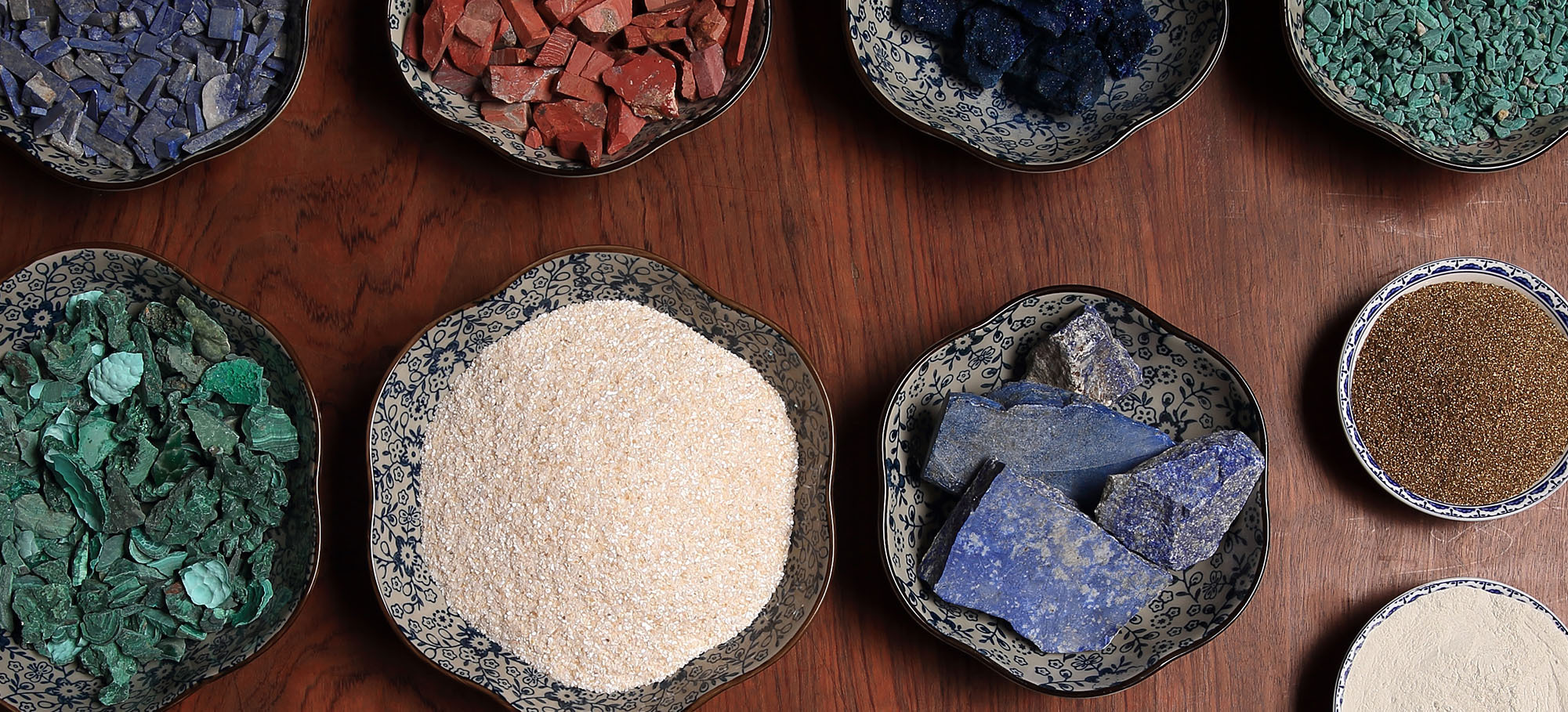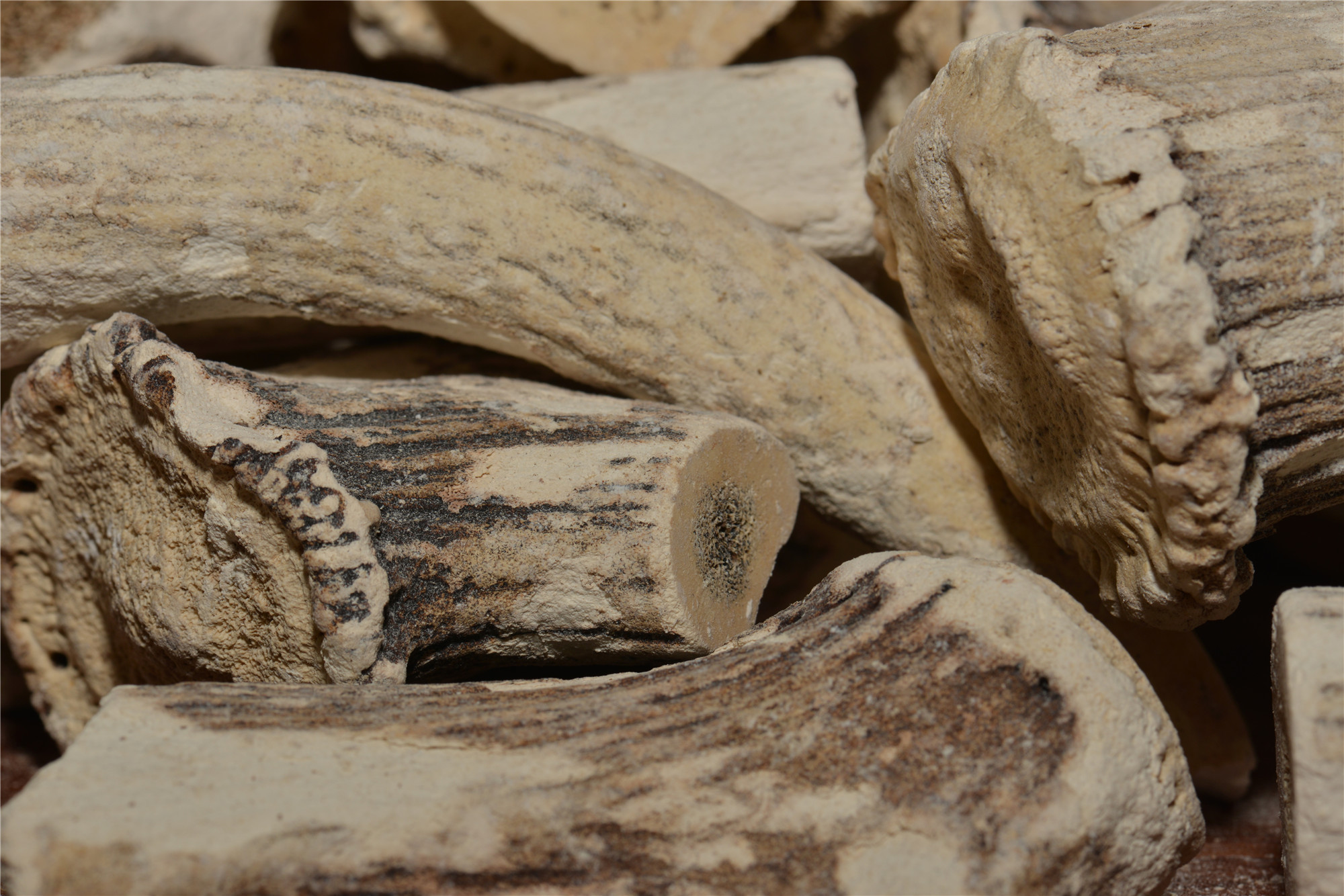Red sandalwood
◆AccessoriesTo produce a completed qin, it will need, in addition to top and bottom boards, such accessories as guanjiao (ceremonial cap), longyin (dragon’s gums), yueshan (bridge), chenglu (bridge accessory), qinzhen (tuning pegs) and yanzu (goose feet). With qins that have been passed on from generation to generation, wooden accessories are the most common, though other materials are also used, such as ivory and jade stones. I prefer wooden materials, among which my favorite is red sandalwood, mainly because wooden materials have better sound transmitting (acoustic) effects than non wooden materials like ivory and jade. Even with wooden materials, there are different sound transmitting effects. Red sandalwood may not be the best. Whatever wood that is the most appropriate for the vibration frequency of a certain top and bottom boards is the best choice. It is only wise for qin makers to experiment with different kinds of wood to find the one that has the best acoustic effect for making yueshan (bridge) or longyin (dragon’s gums). Qin is a musical instrument and, as such, it produces music. Therefore, sound quality, rather than the precious value of the wood, is the most important when we make qin accessories. I love red sandalwood because its acoustic effect best suits the sound characteristics of the qins I make. That is why I use it in spite of the cost, not because of its precious value.
Red sandalwood, a slow growing evergreen tree that takes 800 years to grow into usable timber, is considered a sacred wood in Southeast Asia. Strong and durable, it is one of the most prized hardwoods due to its high density and is considered the king of all woods in the old days. It has a rich red color, dense grains and fine texture. Due to its somber glory, it has always been favored by the imperial families in China.
The Chinese character for red sandalwood, tan, means “giving of alms” in Sanskrit. I love red sandalwood for its deep rich color, which is elegantly noble and reservedly humble, and for its extraordinary look. In the qins I make, I use red sandalwood as my top choice for making yueshan and other accessories firstly because it guarantees the tone quality, the dense wood grain and hardness are a good complement to the old Chinese fir and Phoboe nanmu, its sound particles have high sensitivity transmission which is the most appropriate for the vibration frequency of the strings and body, and its sound transmission effect is better than other woods; and secondly because it maintains its character of high antiquity and elegance and upholds the true essence of the Lore of the qin.







